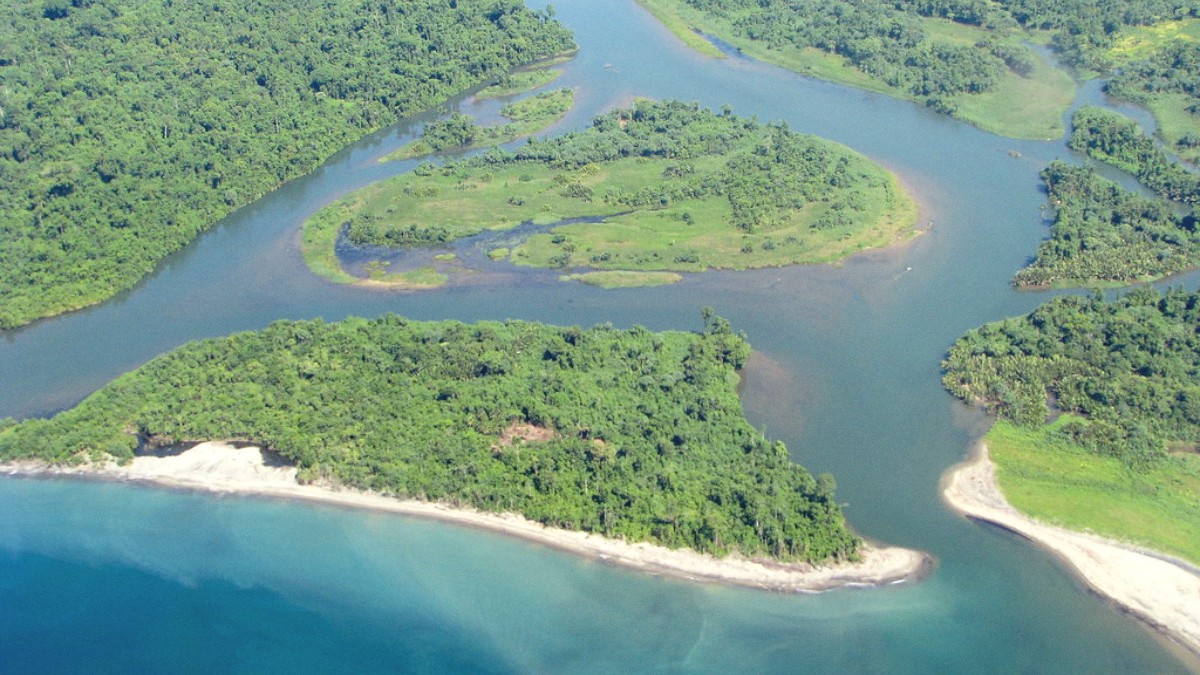
Island Provinces, Papua New Guinea
New Britain, the largest island in the Bismarck Archipelago, forms a significant part of Papua New Guinea. It lies northeast of the main island of New Guinea, with the Dampier Strait separating the two landmasses. The island stretches approximately 595 kilometers (370 miles) long and reaches about 80 kilometers (50 miles) wide at its broadest point.
Kimbe Bay, on the north coast of West New Britain, holds global renown for its exceptional marine biodiversity. Its waters hold a remarkable concentration of coral species, making it a prime destination for diving and snorkeling.
This bay’s underwater topography, including deep walls and volcanic seamounts, creates diverse habitats for an array of marine creatures. The contrast between the volcanic highlands and the rich coastal waters makes New Britain a place of compelling natural contrasts.
New Britain possesses a rich and intricate history. Early societies established complex social structures and trade networks, relying on the island's natural resources. European contact began in the 17th century, with significant colonization efforts arriving later. Germany annexed the island in 1884, naming it "Neupommern" as part of German New Guinea. This period introduced European administration and new economic systems.
World War I changed colonial power, with Australian forces capturing New Britain in 1914. It became part of the Territory of New Guinea, administered by Australia. New Britain played a pivotal strategic role during World War II. Rabaul became a major Japanese military base, earning the nickname "Japan's Pearl Harbor in the South Pacific." The island witnessed intense battles, leaving behind a wealth of military relics. These tunnels, bunkers, and aircraft wrecks stand today as solemn reminders of the conflict.
Thousands of years of human habitation and cultural development.
Annexed as "Neupommern," introducing European administration.
Managed under League of Nations mandate.
Rabaul served as a major Japanese stronghold.
New Britain joins the independent Papua New Guinea.
The island's volatile volcanic activity consistently reshapes its landscape and impacts human settlements. Mount Tavurvur, among other active volcanoes, has caused widespread devastation multiple times.
The 1994 eruption, in particular, devastated Rabaul, burying much of the town under ash and forcing its administrative center to relocate to nearby Kokopo. A visit here allows for direct interaction with these layers of time.
The impact of the war reshaped landscapes and lives, influencing the island's modern identity. Post-war, New Britain reverted to Australian administration, eventually gaining independence as part of Papua New Guinea in 1975.
New Britain presents a journey through natural drama, historical layers, and living cultures. A visit supports local communities and provides insights into a less-visited part of the world. Plan your trip carefully for a rewarding experience.
New Britain offers a blend of natural wonders and historical depth, making it a destination of varied interests.
Witness a dramatic natural spectacle from an active volcano.
Explore tunnels, bunkers, and aircraft wrecks from a significant historical period.
Dive into world-renowned coral reefs with exceptional marine biodiversity.
The economy relies heavily on palm oil, cocoa, copra, fishing, and timber. These industries shape the rural landscape and provide livelihoods for many residents. Tourism, notably dive tourism, also constitutes a growing sector.